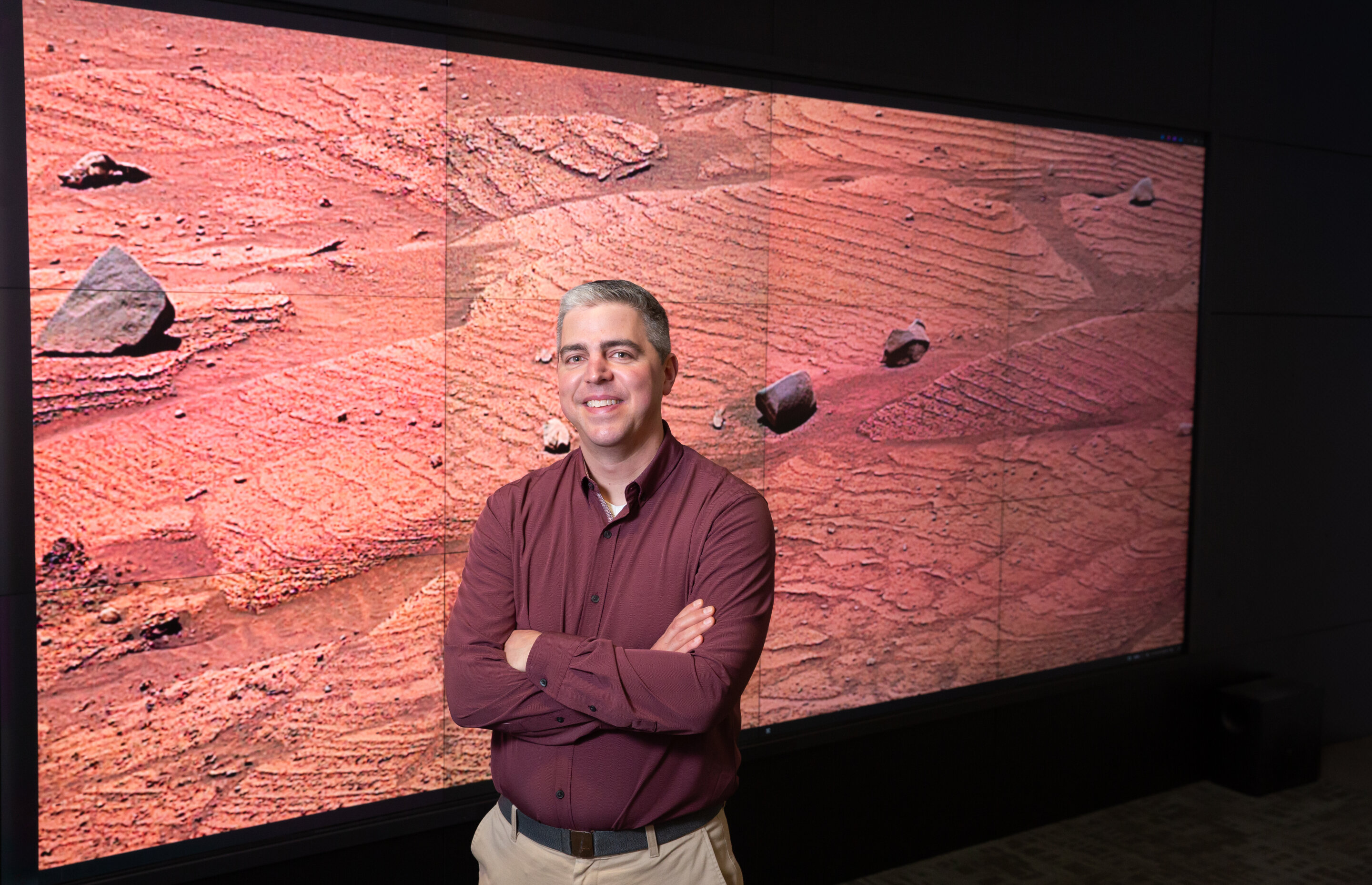Follow us on Google News (click on ☆)

This self-portrait of NASA's Mars rover Curiosity shows the vehicle at the "Big Sky" site.
Image Wikimedia
Data collected by Curiosity in Gale Crater reveals the presence of siderite, an iron carbonate mineral. This discovery, published in Science, suggests that Mars' ancient atmosphere was rich in carbon dioxide. Researchers estimate that this atmospheric composition could have allowed liquid water to exist on the surface.
Siderite forms in the presence of CO2 and water, indicating an environment once favorable for life. Scientists believe Mars' cooling led to the transformation of atmospheric CO2 into carbonate minerals. This process may have contributed to the loss of the planet's atmosphere and its subsequent drying.
Future Mars missions could confirm these findings by studying other sulfate-rich areas. Such research would help understand how Mars transitioned from a warm, wet state to its current condition. Studying carbonate formation mechanisms on Mars might also inform CO2 sequestration strategies on Earth.

Ben Tutolo, associate professor at the University of Calgary, is the lead author of the study on Curiosity's discoveries.
Credit: Riley Brandt/University of Calgary
Ben Tutolo highlights the importance of these findings for understanding planetary habitability's fragility. Small changes in atmospheric composition can have major consequences. Mars, once habitable, lost this capacity, unlike Earth, which has maintained it for billions of years.
How does siderite reveal Mars' past?
Siderite is a mineral that forms in the presence of carbon dioxide and water. Its presence on Mars indicates the planet once had a CO2-rich atmosphere and conditions suitable for liquid water.
This mineral acts as a time capsule, preserving information about Mars' ancient atmosphere. Scientists can thus reconstruct environmental conditions that existed on Mars billions of years ago.
Siderite formation requires specific conditions, including certain pressures and temperatures. Studying it helps better understand how Mars evolved from a potentially habitable world to a cold, dry desert.
This discovery opens new perspectives for searching for traces of past life on Mars. It also helps assess other planets' ability to maintain habitable conditions over long periods.
Why did Mars lose its atmosphere?
Mars underwent a radical climate shift, changing from a warm, wet environment to a cold desert. This transformation is largely attributed to the loss of its carbon dioxide-rich atmosphere.
CO2, Mars' primary greenhouse gas, was gradually trapped in rocks as carbonates. This process reduced the greenhouse effect, leading to global cooling.
The absence of a global magnetic field also played a key role. Without this protection, solar wind eroded Mars' atmosphere, accelerating its disappearance.
Understanding these mechanisms is crucial for assessing Mars' past habitability and predicting planetary atmospheres' evolution. It also offers valuable lessons about climate change, including what Earth is experiencing today.